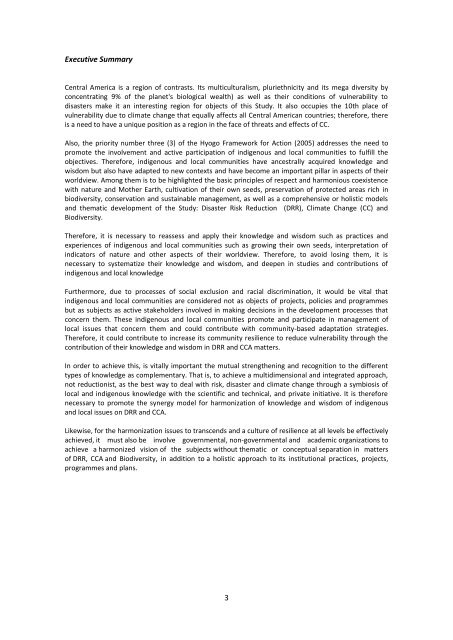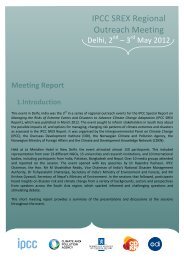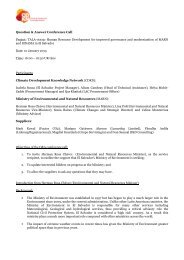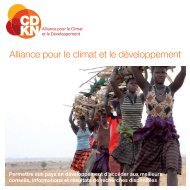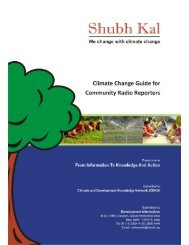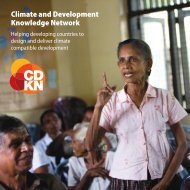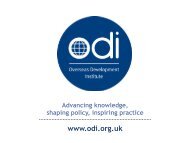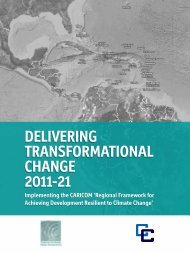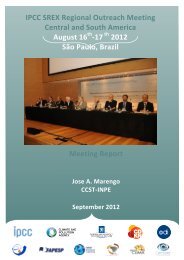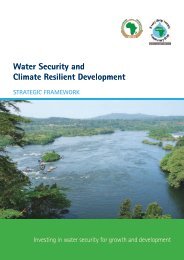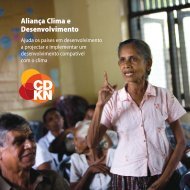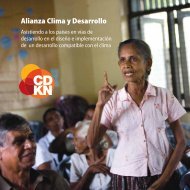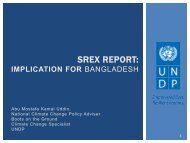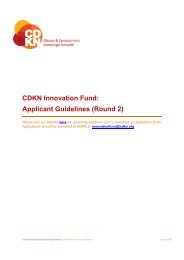Harmonized Perspectives - CDKN Global
Harmonized Perspectives - CDKN Global
Harmonized Perspectives - CDKN Global
- No tags were found...
Create successful ePaper yourself
Turn your PDF publications into a flip-book with our unique Google optimized e-Paper software.
Executive SummaryCentral America is a region of contrasts. Its multiculturalism, pluriethnicity and its mega diversity byconcentrating 9% of the planet's biological wealth) as well as their conditions of vulnerability todisasters make it an interesting region for objects of this Study. It also occupies the 10th place ofvulnerability due to climate change that equally affects all Central American countries; therefore, thereis a need to have a unique position as a region in the face of threats and effects of CC.Also, the priority number three (3) of the Hyogo Framework for Action (2005) addresses the need topromote the involvement and active participation of indigenous and local communities to fulfill theobjectives. Therefore, indigenous and local communities have ancestrally acquired knowledge andwisdom but also have adapted to new contexts and have become an important pillar in aspects of theirworldview. Among them is to be highlighted the basic principles of respect and harmonious coexistencewith nature and Mother Earth, cultivation of their own seeds, preservation of protected areas rich inbiodiversity, conservation and sustainable management, as well as a comprehensive or holistic modelsand thematic development of the Study: Disaster Risk Reduction (DRR), Climate Change (CC) andBiodiversity.Therefore, it is necessary to reassess and apply their knowledge and wisdom such as practices andexperiences of indigenous and local communities such as growing their own seeds, interpretation ofindicators of nature and other aspects of their worldview. Therefore, to avoid losing them, it isnecessary to systematize their knowledge and wisdom, and deepen in studies and contributions ofindigenous and local knowledgeFurthermore, due to processes of social exclusion and racial discrimination, it would be vital thatindigenous and local communities are considered not as objects of projects, policies and programmesbut as subjects as active stakeholders involved in making decisions in the development processes thatconcern them. These indigenous and local communities promote and participate in management oflocal issues that concern them and could contribute with community-based adaptation strategies.Therefore, it could contribute to increase its community resilience to reduce vulnerability through thecontribution of their knowledge and wisdom in DRR and CCA matters.In order to achieve this, is vitally important the mutual strengthening and recognition to the differenttypes of knowledge as complementary. That is, to achieve a multidimensional and integrated approach,not reductionist, as the best way to deal with risk, disaster and climate change through a symbiosis oflocal and indigenous knowledge with the scientific and technical, and private initiative. It is thereforenecessary to promote the synergy model for harmonization of knowledge and wisdom of indigenousand local issues on DRR and CCA.Likewise, for the harmonization issues to transcends and a culture of resilience at all levels be effectivelyachieved, it must also be involve governmental, non-governmental and academic organizations toachieve a harmonized vision of the subjects without thematic or conceptual separation in mattersof DRR, CCA and Biodiversity, in addition to a holistic approach to its institutional practices, projects,programmes and plans.3


